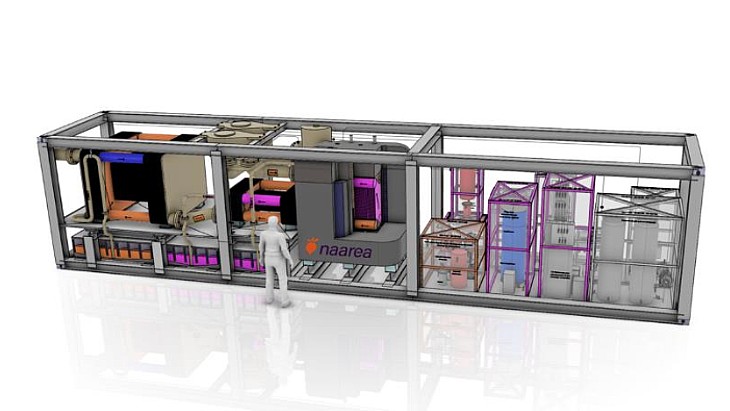The new Innovation Molten Salt Lab will bring together the 20-years of expertise in molten salts chemistry from the Laboratoire de Physique des 2 Infinis Irène Joliot-Curie (ICJLab) with Naarea's "technological knowledge in the fields of materials, neutronics, safety analysis and materials and fuel data".
A statement announcing the project said the new lab's roadmap "will aim to foster collaborative work and capitalise on the concepts and innovations developed at Naarea to the benefit of the European molten salt reactor sector ... the goal ... is to become the European leader in the field of molten salts research and development, for both molten salt nuclear reactors and other non-nuclear applications such as metallurgy and concentrated solar power".
In quotes
Naarea CEO Jean-Luc Alexandre said the new lab "allows us to pool our skills and demonstrates our ability to step up our efforts to develop our XAMR project ... [and] marks a significant milestone for Naarea, which is positioned to make a vital contribution to establishing and achieving recognition for true French leadership and expertise in the field of molten salt research at the European level. This valuable expertise will not only have a positive impact on Naarea, but also on a variety of industrial sectors, whether related to nuclear energy or not".
Deputy CEO for Innovation at the CNRS, Jean-Luc Moullet, called it "an ambitious joint laboratory that symbolises the contribution of French research to the revival of the nuclear sector. The CNRS encourages the development of joint laboratories, which offer a flexible and long-term framework conducive to the development of fruitful public-private partnerships".
President of Université Paris-Saclay, Camille Galap, said: "Université Paris-Saclay is a research-intensive university committed to contributing to finding solutions to scientific and technological challenges. We are therefore delighted to join this partnership with Naarea and the CNRS to create the joint laboratory IMS Lab, whose research work will help respond to the critical challenges of decarbonising energy, in particular for industry."
The background
Naarea - the name is taken from Nuclear Abundant Affordable Resourceful Energy for All - was founded in 2020 and was one of the winners of the France 2030 investment plan for innovative nuclear reactors. It is developing the XAMR, an advanced modular reactor, a molten salt fast neutron microreactor capable of producing 40 MWe of electricity/80 MWt of heat that will burn plutonium and by reusing long-lived nuclear waste help close the fuel cycle.
The company says the XAMR will be about the size of a bus and it intends to target applications in areas such as transportation, agriculture and smart buildings. Naarea says that, because of the compact size of its reactor and because there is no need for it to be grid-connected, the XAMR can "be deployed as close as possible to regions, to match energy demand as closely as possible and allow the control of security of supply, at the service of industries and communities". The aim is to be on the market by 2030.
MSRs use molten fluoride salts as primary coolant, at low pressure. They may operate with epithermal or fast neutron spectrums, and with a variety of fuels. Much of the interest today in reviving the MSR concept relates to using thorium (to breed fissile uranium-233), where an initial source of fissile material such as plutonium-239 needs to be provided. There are a number of different MSR design concepts, and a number of interesting challenges in the commercialisation of many, especially with thorium.







_53514_33880.jpg)






